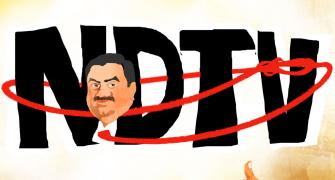Success in investing depends, not on how well you can time the market, but on how much time you spend in the market, goes an old adage. This theory, over the years, has been proven true.
There have been several booms and busts where investors have made as well as lost money. And interestingly, seldom a short-term trader or investor has made pots of money consistently.
Their earnings graph is more akin to that of a gambler in a casino, who despite several runs of good luck and amassing money, eventually always lands up losing his capital when he continues playing. This is because the odds are always in favour of the house winning against him.
The main difference between short- and long-term investing is that the former is like surfing on the beach. With every wave, you experience a new thrill, but at the end you land up on the beach always.
On the other hand, long-term investing is like taking a rowing boat out in the ocean. While it may take time to clear the initial waves, once that is done, it is smooth sailing ahead.
Yes, the occasional wave (read blip in the markets) might push you behind a bit, but you continue to sail safely ahead of the pack. Therefore, short-term investors or traders can make money for a brief period. After that, they lose it and have to start all over again.
So the big question is why are the odds stacked against short-term investors? To get a better idea of this, we need to understand that there are only two emotions governing the stock markets - fear and greed. Basic economics says that market price is the function of demand and supply.
However, if you look a little deeper, what is demand and supply? Demand (read buying) in the stock market parlance is the 'greed' and supply (or selling) is 'fear'. So, in other words, we can say that the market price is the equilibrium of the composite fear and greed of all the market participants.
In the short run, when greed is in excess, markets move up and reach dizzying heights, beyond justified fundamental valuations, only to be pulled down to other extremes, by the all-consuming fear that comes after a sell-off that may start small, but which eventually develops into an avalanche.
However, in the long run, fear and greed give way to reason and rational judgement. Long-term valuations will eventually follow fundamentals.
If companies are growing in stature and profits, there is no reason why their share prices will not.
Whether you invest directly in equities, or whether through mutual funds, the best thing to do is to stay invested over the long run, while avoiding the temptation of cashing in on short-term trends. By long term, we mean a time horizon of at least three years or more.
Think of the investor who entered the market in November or December last year with an intention of making quick bucks over a few months' time. Either he would have been forced to hold on to his investments till this phase passes away. Otherwise, in crunch time, he would have to liquidate the investments at huge losses.
Typically, short-term investors enter the markets enthused by an ongoing rally. The catch, of course, is that the better part of the rise is already behind them by then.
Thereafter, even if they are making profits on their investments, the desire to get more tempts them to hold on till the next correction, where they panic and sell. Let us illustrate this through an imaginary illustration of a short-term investor, taking the actual NAV's of a diversified equity fund (See Over the years).
Over the years:
| Date | NAV |
| December 10, 1993 | 10 |
| April 10, 1995 | 20.49 |
| March 31, 1997 | 10.21 |
| February 10, 2000 | 56.38 |
| August 10, 2001 | 18.65 |
| July 10, 2003 | 29.15 |
| February 10, 2004 | 53.67 |
| May 17, 2004 | 43.51 |
| November 10, 2004 | 56.35 |
| May 10, 2006 | 123.34 |
| June 12, 2006 | 91.65 |
| December 10, 2007 | 190.19 |
| February 7, 2008 | 163.60 |
The fund was launched in December 10, 1993 when the markets were completely dull because of the Harshad Mehta scam. However, the markets started rallying again and the short-term investor would have entered the markets in 1995, only to see the crash of 1997, where he would have sold at a loss.
Again, with the technology boom, he would have summoned courage and got in at a NAV of say, 35. However, since the markets were booming, he would have held on, only to see the global meltdown of 2000-01.
The markets started moving up in 2003, due to better corporate performance and economic growth. However, as the short-term investor typically behaves, he would have initially stayed away and then entered at say, the NAV of 40.
The markets rose further and the investor was finally expecting to make money, before the defeat of the NDA sent markets crashing, and the investor ran to sell, to salvage whatever gains he had made.
The markets started rising again after some time and if the investor finally re-enters at say 80. In June 2006, the markets crash again, and the investor sells out slightly above his cost price. This story was repeated; when the investor bought at say 190 in 2007, only to see his gains evaporate in the recent crash, when the NAV fell to around the same level.
This would have left the short-term investor extremely rattled and disoriented. On the other hand, if long-term investor has invested Rs 100,000 at inception, he would be worth Rs 16.3 lakh (Rs 1.6 million) in less than 15 years. Really good money one would have to admit.
The writer is director, Touchstone Wealth Planners.








